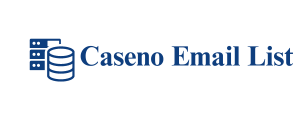Dialing Up the Past: Exploring Directory
Assistance and Modern Alternatives
In the age of smartphones and instant searches, the concept of directory assistance might seem like a relic from a bygone era. However, for many, the iconic “4-1-1” dial code still holds a nostalgic charm. This guide delves into the history and evolution of directory assistance, exploring its modern alternatives and offering valuable insights into finding the phone numbers you need.
1. Ringing Up the Past: The Rise and Fall of Traditional Directory Assistance
For decades, directory assistance served as the primary gateway to finding phone numbers. Here’s a
glimpse into its legacy:
The Operator’s Voice: Prior to the digital revolution, reaching a human operator was the only way to obtain a phone number through directory assistance. Users would dial a specific code (often 411) and connect with an operator who would then search printed directories and provide the requested information.
Convenience at a Cost: While convenient
directory assistance wasn’t without its drawbacks. Calls were often charged per minute, and wait times could be significant during peak hours.
The Decline and Near-Extinction: With the rise of online directories and search engines, the use of directory assistance services dropped dramatically. Many lead generation for photographers phone companies have even discontinued offering traditional operator-based assistance, rendering the once-ubiquitous “4-1-1” code obsolete in many regions.
2. Echoes of the Past: Modernized Directory Assistance Services
While traditional operator-based services have largely faded, some modernized variations of directory assistance still exist.
Automated Systems: Some
phone companies offer automated directory assistance systems accessible by dialing a specific code. These systems typically require users to input the desired location and name through a keypad and then provide the retrieved information.
Toll-Free Alternatives: A few toll-free directory assistance numbers are still available, often offering limited searches or redirecting users to online directories.
3. Embracing the Digital Age:
A Multitude of Modern Alternatives
Today, a plethora of online resources and search tools offer a far more efficient and convenient way to find phone numbers compared to traditional directory assistance. Let’s explore these modern alternatives:
Online Directories: Whitepages and Yellowpages remain prominent players, offering online versions of their traditional printed directories. These directories allow searches by name, location, and even category (residential or business) with varying degrees of accuracy and detail depending on the chosen service level (free or paid).
Search Engines: Utilizing search engines like Google can be surprisingly effective for finding phone numbers. By incorporating specific keywords like the person’s name, city, and state, you can often locate their contact information listed on websites or social media profiles (if publicly available).
Social Media Platforms:
Social media platforms like Facebook and LinkedIn provide an avenue to search for individuals and businesses. If the user chooses to make their contact information public, you might find their phone number listed on their profile.
Industry-Specific Tools: Specialized directories exist for specific industries. For example, lawyers or doctors might be listed on professional association websites, which might include contact information.
4. The Power of Networking and Cold Calling
While primarily online tools dominate modern phone number searches, there are still situations where traditional methods can prove helpful:
Reaching Out to Mutual Connections:
Contacting friends, colleagues, or acquaintances who might have the desired phone number in their contact list can be a valuable strategy. Explain your situation politely and inquire if they’d be willing to share the information or facilitate a connection.
The Art of Cold Calling: While not always the most efficient method, cold calling a business associated with the individual you’re trying to reach can sometimes yield results. Explain your situation politely and inquire if they’d be willing to connect you with the person you’re seeking.
5. A Word on Privacy and Legal Considerations
As you embark on your phone number search journey, remember to prioritize ethical considerations and legal boundaries.
Respecting Privacy: Only use
these methods for legitimate purposes and avoid intruding on someone’s privacy.
Accuracy of Information: The information found online may not always be accurate or up-to-date. Consider using a combination of methods for A technique for quickly finding better verification.
Legal Restrictions: Be mindful of legal restrictions in your region regarding phone number searches. Avoid using any methods that violate privacy laws.
Conclusion
While the iconic “4-1-1” dial code might be fading into the annals of telecommunications history, the quest to find phone numbers remains a relevant task in today’s connected world. By leveraging the multitude of online resources and search tools available, coupled with a dash of ingenuity and respect for privacy, you can effectively navigate the digital landscape and find the phone numbers you need.

